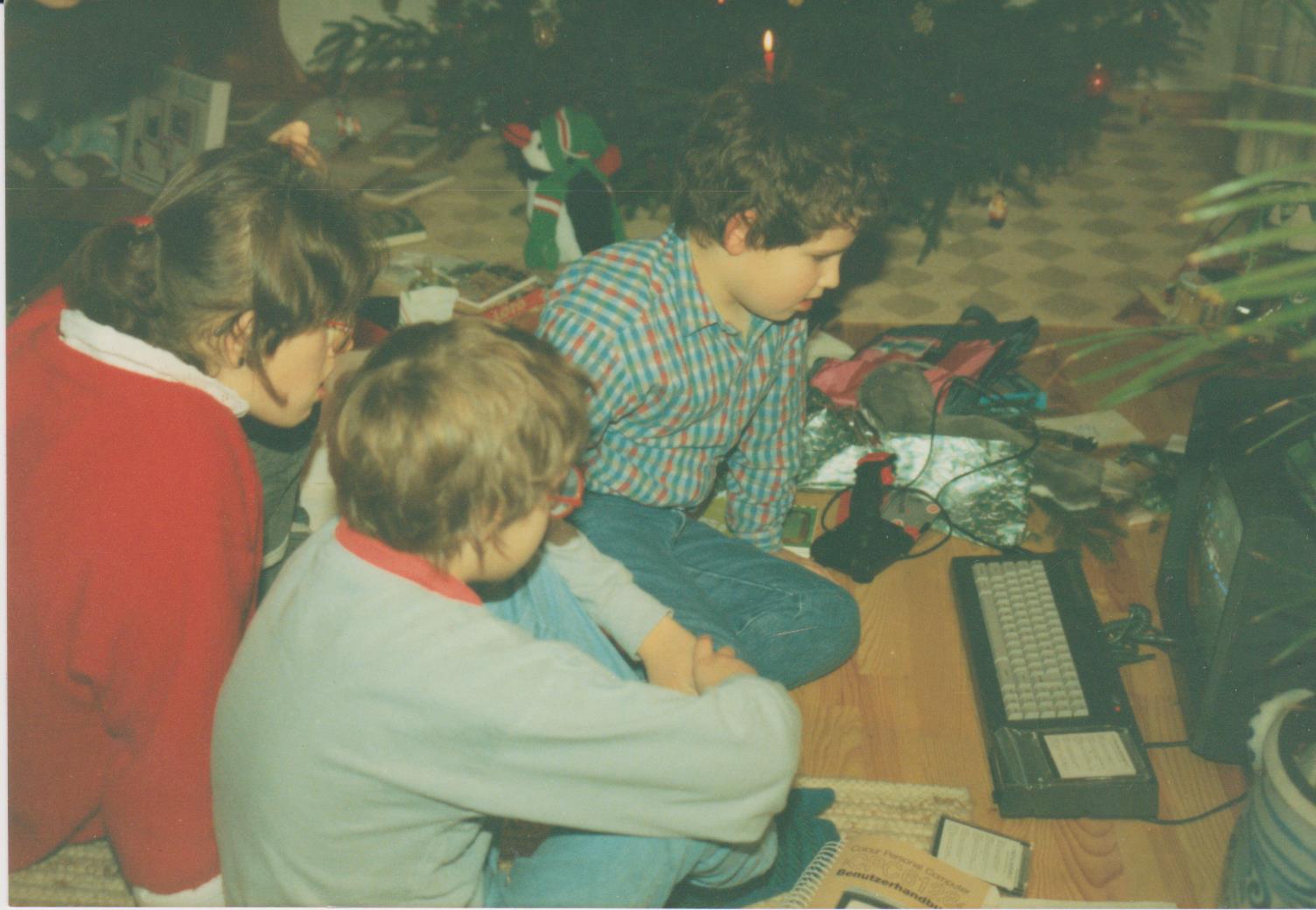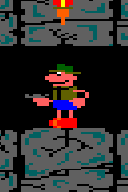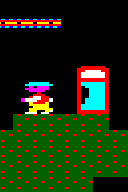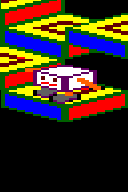Roland on the Ropes - 40th anniversary Unity remake
The Remake
Roland on the Ropes was released in 1984, and to celebrate its 40th anniversary, I decided to re-implement it—while also getting to grips with Unity along the way. It was the very first computer game I ever played, and while nostalgia is its main draw for me, I’ll admit that the game itself doesn’t have much to offer by today’s standards. That said, here’s my port! If you’re curious, there’s some backstory below. All the sounds and graphics have been faithfully ripped from the original.
For comparison, you can watch a video of the original here. Alternatively, you can play it in an emulator over at archive.org.
My first computer
I remember that day very vividly. My father came home with his brand-new Amstrad CPC 6128 that he just bought, and I was absolutely thrilled! At just eight years old, I knew very little about computers, but I was curious, and it felt like the future had finally arrived.
“What’s up with you? You won’t be using it anyway, so what gives?” my dad said. A smart man, but in this case, he couldn’t have been more wrong. By Christmas the following year, I had my very own CPC, and my dad could finally reclaim his machine.

These machines were relatively bare bones and did not come with a real operating system. Instead, the CPC booted straight into the BASIC programming language. Without at least some fundamental knowledge, all you’d ever see was the start screen. To play a game, you had to load it manually with the RUN command.
My dad, a teacher, used the CPC to program a geometry calculator for his math classes. I was amazed—it felt like magic! Naturally, I wanted to learn how to do it, too. Whenever my dad was outside working in the garden, I was allowed to use the computer. I’d run back and forth between the garden and the computer, asking questions like, “How do I make the computer count to 10?” or “How do I make my text red?” He patiently answered each one, and I’d sprint back to try it out, only to return moments later with the next question. For some reason, I also vividly remember nibbling on a cucumber while doing this. I always enjoyed eating.
The games I had back then were simple enough that writing something similar seemed almost within reach. Over time, I got better, though the games I played grew more sophisticated, too. Eventually, I developed a full RPG engine with 3D graphics and all the bells and whistles. By then, though, no one cared—everyone had moved on to playing DOOM on PCs. It was time for me to move on, too. But that’s another story.
Roland, Amstrad's Mario
The very first games I played were some Roland games. Roland was intended to be Amstrad's mascot, and I've just learnt from Wikipedia, that
Roland was a game character developed in 1984 by Alan Sugar, CEO of Amstrad, and Jose Luis Dominguez, a Spanish game designer.That came as a surprise because, unlike Mario, who has a consistent look across every game, Roland seems to reinvent himself in each title. It’s fair to say that Amstrad didn’t put much effort into making Roland a cohesive franchise mascot.



Roland on the Ropes
Originally released in Spain as Fred by Indescomp, the game found a second life internationally under the name Roland on the Ropes on the Amstrad CPC. It was one of the early titles for the platform and remains notable for its technical ambition, even if the execution had its quirks. At its core, the game is an Indiana Jones-themed maze-style adventure where players guide an intrepid explorer through a labyrinth of hazards, including bats, mummies, and other creatures.
What set Fred/Roland on the Ropes apart, particularly for its time, was the scrolling. While this may not seem groundbreaking today, it was a significant technical achievement on the Amstrad CPC. The CPC lacked dedicated hardware for sprite manipulation or tile-based scrolling, unlike its contemporaries like the Commodore 64 or ZX Spectrum. This meant that programmers had to rely on the Zilog Z80 CPU to manually redraw the screen frame by frame—a computationally expensive process that could easily overwhelm the modest 4 MHz processor.
Despite this, Fred managed to implement scrolling using some magic tricks. The results weren't perfect—the screen flickered, and performance could struggle under load—but for players in the mid-1980s, it was an impressive feat that demonstrated the potential of the relatively new Amstrad CPC.
The Legacy of Paco Menéndez
One of the game's developers, Paco Menéndez, would go on to achieve greater fame with La Abadía del Crimen (1987). This game, inspired by Umberto Eco's novel The Name of the Rose, is considered a masterpiece of its era. It was one of the first to feature isometric 3D graphics on 8-bit machines, offering an atmospheric and richly detailed experience. Players assumed the role of a monk investigating a murder in a medieval monastery, navigating both the game's intricate plot and the daily routines of monastic life.
While Fred was a relatively straightforward action-adventure game, La Abadía del Crimen pushed the boundaries of what video games could achieve narratively and technically. Menéndez's work on these titles highlights his talent for extracting remarkable results from limited hardware, cementing his place in gaming history.
If you're interested in reliving these classics, La Abadía del Crimen has been lovingly remade and remains accessible across various platforms.